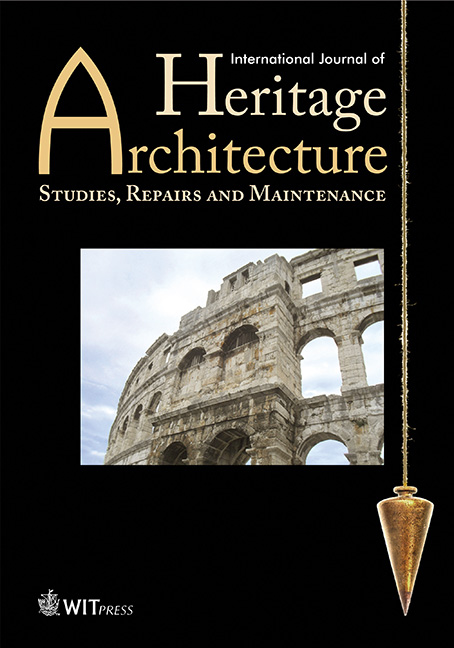Heritage concerning the usage of water resources in the defence sites of ancient Roman Empire
Price
Free (open access)
Volume
Volume 1 (2017), Issue 4
Pages
8
Page Range
704 - 712
Paper DOI
10.2495/HA-V1-N4-704-712
Copyright
WIT Press
Author(s)
D. Constantinescu & B.A. Carlan
Abstract
The evolution of historic sites was influenced not only by socio-political events, but also by the evolution of the technological and economical activities, in connection with the particularities of the environment and climate changes, for a period of time. The methodologies regarding the storage and the transport of the water, necessary for the supplying for the ancient cities and fortresses, established during the pre-roman civilization, were transferred to the greek and roman civilizations and, further, to the ones who inherited their constructions and technologies. In the researches, we have in view the well-known antique cities such as Troy, roman sites on the rhine river, Augusta raurica, roman Byzantine sites on the Danube river, Sucidava, ulpia Oescus and capidava.
Using the documents and results from the field investigations, the particularities regarding the water conservation and transportation in the ancient Wilusa (Ilion, Troy), and the transfer of water to the romans and the extent of the huge area between the Aegean Sea, Danube river and the rhine river are presented. In the article, we analyse the localization of water resources and the technologies used for water transportation and storage. The pictures taken on the field, maps and models of reconstitution of the existent damaged constructions are also presented.
The authors consider the article as only the first step in the analysis of the evolution of the water resources used by the ancient establishments located in the areas mentioned above. The elements of the water supply sources that were taken for consideration will be analysed using ‘the environmental engineering science glasses’.
Keywords
environment, field investigation, fortress, technology, water




